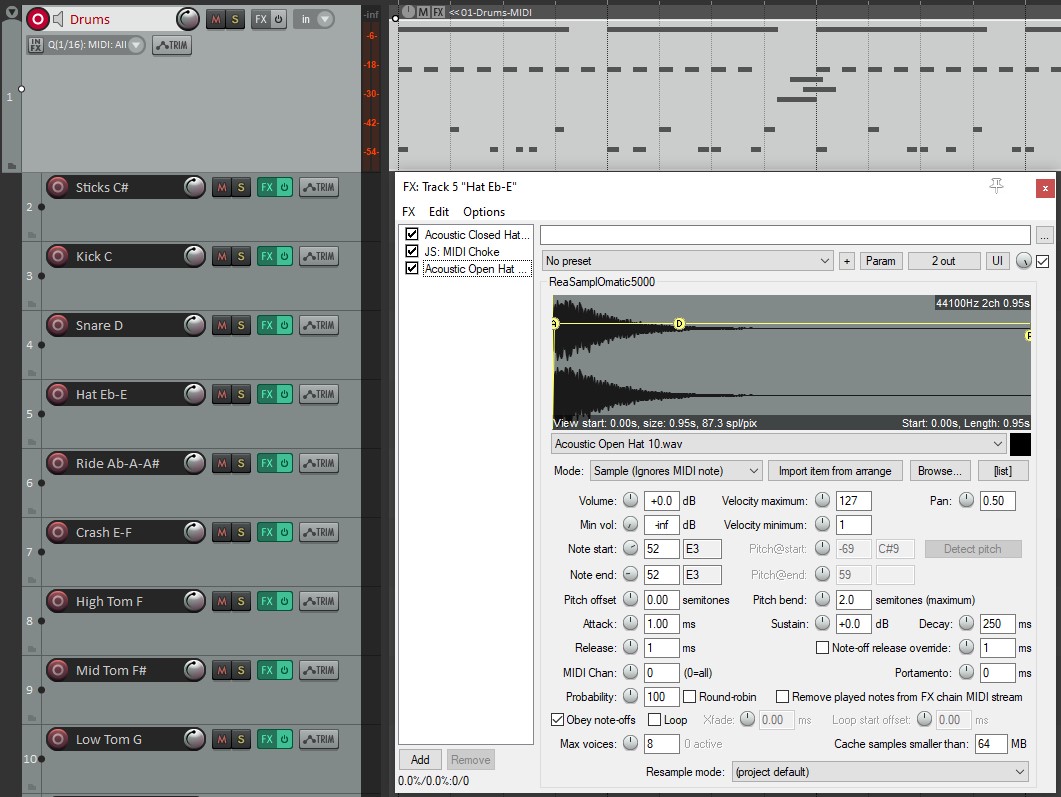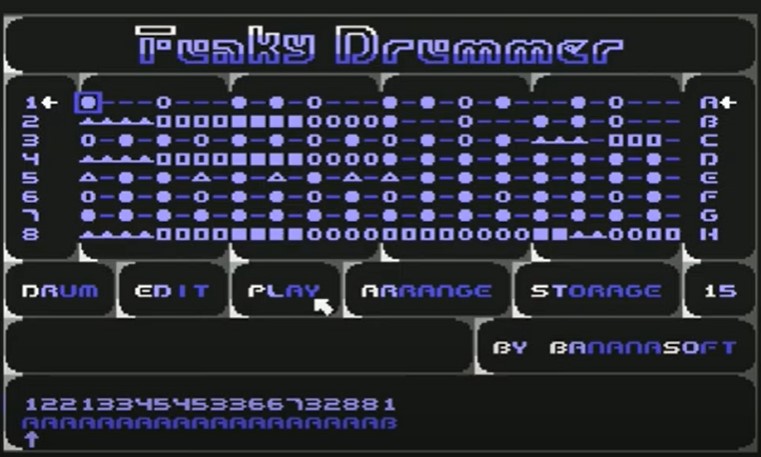As I mentioned earlier I decided to make some drum tracks to play along with for my fingerstyle arrangements, equally to improve my tempo and equally to make them more engaging to audiences. I've played with drummers many times over the years, solo fingerstyle, it makes sense. Solo fingerstyle already incorporates a bassline so don't need a bassist, it incorporates a melody so don't need a singer, it incorporates a rhythm so don't need a rhythm guitarist are out...there's some but not a lot of percussion so drummers are a good fit! I've talked about playing with drummers many times as far back as 2009 and 2010 and at an open night a decade ago not to mention a gig I did this very year at work with my mate Geoff.
I'm not a very good drummer. I own an entry level electric drum kit, a Yamaha DTX Explorer, I dabbled a bit years ago, decided drumming is best left to drummers. But I've always had a love for the drums and how they fit with guitars, and it goes right back. Let my wax nostalgically for a moment.
In the mid 80's I was a Commodore 64 nut. It's where I learnt to program - C64 basic and even hand coded 6502 assembler. Musically, there were a few programs I used on it, one was "Funky Drummer". I would make drum loops and play along with them endlessly. Sadly no recordings of that exist anymore...I do have a few cassette tapes with various stuff on it, perhaps one day I will stand up a cassette player and see if I can find any!
In the mid-late 90's a mate of mine at work introduced me to the DOS multi-track sequencer "Impulse Tracker" which was a whole new level of drum machine, with actual drum samples! I had a lot of fun with that. That eventually gave way to "Modplug Tracker", being Windows based, but I never enjoyed it quite as much. I wrote several original songs in the late 90's early 2000's during the time I was getting more into arranging fingerstyle covers. Fingerstyle had always been my first love, but I had a fun experimental "full band" period of time which ended around 2001.
|
|
|
Yes, recordings exist from that era...I need to find the masters and remix them...one day. I've never shared any here before, I'm not sure why - possibly because they just aren't any good - but why not. Have a listen to these badly mixed songs I wrote - using Impulse Tracker, my electric guitar, bass and some vocals. Ask me if you want me to talk more about songs from my distant past :-)
| Blue Metal: | |
| Sheister Meister: |
Which brings me back to the topic of the day, making drum tracks. I'm not going to revive any of that old software, but I have my DAW Reaper, and I have Kenny Gioia, The Legendary Reaperian of Lore. He showed me the FX called "ReaSamplOmatic5000", which is EXACTLY what a sample tracker in the context of Reaper should look like. Good job Repearians. It took me a while to get my head around it, but it is just what I needed. Essentially using MIDI to track samples, making it the drum machine sequencer I loved from my youth. I've already churned out a backing drum track for "Wish You Were Here". What really makes ReaSamplOmatic5000 special for me is that I can us my little AKAI MPK mini mk3 MIDI device as a drum trigger - OR - I can use my Yamaha DTX Explorer as an actual kit through my PreSonus interface to record the drum hits, when I have drummer in the house. Or even, olde school, just click away in the MIDI editor and make them all like I did when I was a kid.
So nice. I've got my WAVBVKERY vintage kit drum samples, I will need to look for others for the various songs I do - but the 70's Ludwig is a great starting point . It will take some time, but it will be good to make these drum backing tracks.
JAW's guide to using ReaSamplOmatic based on Kenny G's tutorials
References: Youtube 1 Youtube 2
Note for Windows OS: In Options->Preferences Device, if you are just using your computer soundcard, then don't use DirectSound, it is gross and laggy. You could use ASIO (either the one that came with your MIDI controller or ASIO4All) but the driver takes over windows sounds so you wan't be able to listen to youtube/music/etc. A good option however is WASAPI, which is Microsoft's answer to ASIO. If you use it in Exclusive mode it is pretty close to ASIO, but then you may as well use ASIO. In Shared mode it is quite good - not too laggy, and you can listen to Youtube at the same time. Change your Block size to be low for low latency, but high enough that you aren't hearing crunchiness.
- Make a new track called Drums. Set it to Record, set the Input to MIDI, All Channels.
- Right mouse click Input, Track Recording Setting, turn on Quantise to 16th notes.
- Right mouse click Input again, set Record MIDI to Overdub. That way each pass just adds drums.
- Make another track called "Kick". Add the FX ReaSamplOmatic5000.
- In the ReaSamplOmatic5000 drag in a Kick Drum sample. The View->MediaExplorer is a great way to browse your sample library, when you have found the one you like, drag it into the waveform window.
- Set the Note start and note end to both be the MIDI number for your target MIDI note. It's a good idea to turn on View->Virtual Keyboard so you can see what number/what is happening.
- Set Min vol to -inf if you are using a touch sensitive (velocity) MIDI trigger. If you are just using your computer keyboard, not really an issue, it's only on/off
- Make sure the Mode is set to Sample (Ignores MIDI note).
- Route your Drums track to the Kick track by dragging the routing icon from one to the other. Set Audio to Off, you only want to route MIDI.
You are now at a stage where you have a MIDI track to record your MIDI triggers, it passes the MIDI down to a drum track, the drum track listens out for the one specific MIDI note and then plays the sample when it gets it. You can add other normal FXs to it, adjust faders, panning, etc, like a normal track.
A few other tips/tricks:
- Obviously, add a track per drum type!
- You can include multiple samples per track, for instance I will have a "Hat" track, and it will include an open and close hat sample.
- In the case of an open hat which rings out, you can make it stop ringing if another hat strike is made. Add an FX "JS: MIDI Choke", set the Choke Note Range Start to the the MIDI note that you want to kill the ringing drum, set the Affected Note Range Start to the MIDI note of the ringing drum. In the ringing drum, set "Obey note-offs" to true. Now, if you trigger an open hat, then a moment later trigger a closed hat, the open hat sample will stop ringing, so more like a real drum kit.
- When in the MIDI editor, setting to "Named Notes" view is nicer, and double right click on a note to name it.
- You can change the Grid size in the MIDI editor in the drop down box at the bottom of the window.
- If you need a different time signature, for example there is a 2/4 bar, then right click on the bar in the main window, Insert Time Signature/Tempo Marker, set it to your new time signature, and then repeat the proces in the next bar to change it back to the previous timing.


No comments:
Post a Comment